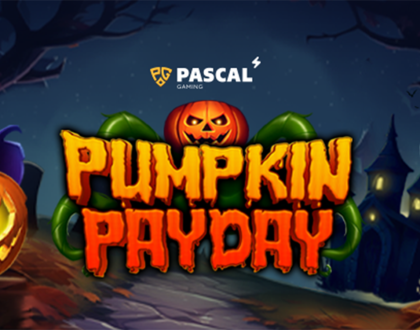PPC Advertising and SEO: How They Work Together for Better Results

Are you looking to improve your online presence and drive more traffic to your website? Two essential digital marketing strategies that can help you achieve this goal are Pay-per-click (PPC) advertising and Search Engine Optimization (SEO).
In this article, we’ll explain what PPC advertising and SEO are, how they work, and how you can use them together to achieve better results. We’ll also cover some best practices to ensure that your PPC and SEO campaigns are working effectively.
Introduction
Digital marketing is a vital part of any business’s marketing strategy in today’s online world. PPC advertising and SEO are two essential strategies for digital marketing that can help businesses of all sizes to drive more traffic to their website and increase revenue.
While PPC advertising and SEO are distinct strategies, they share a common goal: driving targeted traffic to your website. The key difference is that PPC advertising involves paying for traffic, while SEO focuses on optimizing your website to rank higher in organic search results.
What is PPC Advertising?
PPC advertising is a form of online advertising in which you pay each time a user clicks on one of your ads. PPC ads typically appear at the top of search engine results pages (SERPs) or on websites that participate in ad networks.
PPC advertising platforms such as Google Ads and Bing Ads allow you to create ads that target specific keywords and demographics. You bid on the keywords that you want your ads to show up for, and your ad is displayed to users who search for those keywords or match the demographic criteria you set.
PPC advertising can be an effective way to drive targeted traffic to your website quickly. However, it can be costly, and if not set up correctly, you may end up spending more than you earn.
What is SEO?
SEO is the process of optimizing your website to rank higher in search engine results pages (SERPs) for specific keywords. By improving your website’s ranking in organic search results, you can increase the amount of targeted traffic to your website without paying for each click.
SEO involves both on-page optimization, such as optimizing your website’s content and structure, and off-page optimization, such as building backlinks to your website from other high-authority websites.
SEO is a long-term strategy that requires consistent effort and patience to see results. However, once you start ranking higher in search results, the traffic you receive can be sustainable and cost-effective.
How PPC Advertising and SEO Work Together
PPC advertising and SEO are often seen as two separate strategies, but they can work together to improve your online presence and drive more targeted traffic to your website.
PPC advertising can be used to complement your SEO strategy by targeting keywords that are difficult to rank for organically. By bidding on these keywords, you can get your ads to appear at the top of search results and drive traffic to your website quickly.
On the other hand, SEO can be used to complement your PPC strategy by optimizing your website’s content and structure to improve your Quality Score. Quality Score is a metric used by PPC platforms to determine the relevance and quality of your ads. By improving your Quality Score, you can lower your cost per click and improve the effectiveness of your PPC campaigns.
Advantages of Using PPC Advertising and SEO Together
By using PPC advertising and SEO together, you can achieve better results than using each strategy alone. Here are some of the advantages of combining PPC advertising and SEO:
Increased visibility: By using both strategies, you can increase your visibility in search engine results pages (SERPs), as your website can appear both in the paid and organic search results.
Improved targeting: By combining PPC and SEO, you can target specific keywords more effectively. You can use PPC to target high-intent keywords that are difficult to rank for organically, while SEO can be used to target long-tail keywords that are less competitive.
Increased credibility: When your website appears both in the paid and organic search results, it can improve your credibility and brand recognition. Users are more likely to trust a website that appears at the top of search results multiple times.
Cost-effectiveness: By combining PPC and SEO, you can optimize your campaigns to achieve better results at a lower cost. By improving your Quality Score, you can lower your cost per click, while organic search traffic can provide a cost-effective and sustainable source of traffic.
Best Practices for Combining PPC Advertising and SEO
To ensure that your PPC and SEO campaigns work together effectively, here are some best practices to follow:
Conduct Keyword Research
Keyword research is essential for both PPC and SEO. By conducting thorough keyword research, you can identify the keywords that are most relevant to your business and that have the highest potential to drive traffic to your website.
For PPC advertising, you can use tools such as Google Ads Keyword Planner to identify high-intent keywords that are relevant to your business. For SEO, you can use tools such as Ahrefs or SEMrush to identify keywords that your competitors are ranking for, as well as long-tail keywords with lower competition.
Optimize Your Landing Pages
Your landing pages play a crucial role in both PPC and SEO. For PPC, your landing pages should be optimized for the keywords you are targeting, with clear and compelling calls-to-action to encourage users to convert.
For SEO, your landing pages should be optimized for both users and search engines, with high-quality content that answers users’ queries and encourages engagement. Your landing pages should also be optimized for mobile devices, as mobile traffic accounts for a significant percentage of search traffic.
Monitor Your Analytics
Monitoring your analytics is essential for both PPC and SEO. By tracking your website’s performance, you can identify areas for improvement and make data-driven decisions to optimize your campaigns.
For PPC, you should monitor your conversion rates, cost per click, and Quality Score to ensure that your campaigns are effective and cost-efficient. For SEO, you should monitor your website’s traffic, rankings, and backlinks to identify areas for improvement and track your progress over time.
Conclusion
PPC advertising and SEO are two essential strategies for driving targeted traffic to your website and improving your online presence. While these strategies are distinct, they can work together to achieve better results than using each strategy alone.
By combining PPC advertising and SEO, you can increase your visibility in search engine results pages, target specific keywords more effectively, and improve your credibility and brand recognition. To ensure that your PPC and SEO campaigns work together effectively, follow best practices such as conducting keyword research, optimizing your landing pages, and monitoring your analytics.
By incorporating PPC advertising and SEO into your digital marketing strategy, you can achieve better results and drive more traffic to your website.
Recommended Posts

Pascal Gaming Unveils Pumpkin Payday
November 1, 2023

Big Boost: A New Casino Collaboration
November 1, 2023

Far West Mania Megaways by MGA Games
October 27, 2023
